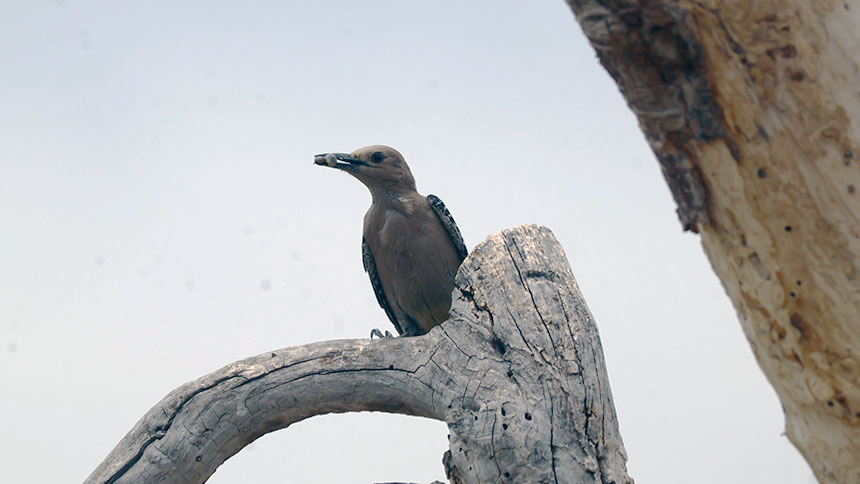
June Species of the Month is the Gila Woodpecker.
This month we look at the Gila woodpecker. The Gila woodpecker is a Keystone species of the Sonoran Desert. On any given Sunday morning as you arrive at the UUCP campus you will surely see one of these classic desert woodpeckers atop a saguaro or pecking for bugs in a mesquite tree. You may also hear one of their calls prior to seeing them. They let out a repetitive rolling or a single high pitched call (To hear their call visit the Cornell Lab of Ornithology link at the bottom of this page).
Diet
Gila woodpeckers are omnivores. They can be seen eating a variety of foods such as cactus fruits, insects and other seasonal fruits. When these birds have young nestlings you can often see the parent birds catching insects and returning to their nest to feed their young. In the below photographs and video taken at UUCP you can see a female doing this.
Size and Plumage
They are medium sized woodpeckers. Their chest plumage has a faint grayish tone. The back and wings have a very unique black and white striped barring. There is also a touch of yellow on the bellies. The back of their heads or “nape” is brown. However, the Males can be identified by a distinct red crown.
Habitat
These amazing desert birds can be found nesting in both tree and even cacti cavities also known as “boots”. A Gila Woodpecker nesting pair will frequently collaborate on excavating the flesh out a Saguarro cacti to create a perfect bird hole to raise their brood of chicks. As the babies reach their fledgling age, the family will leave the cavity in the Saguaro. This newly opened space within a Saguaro often becomes home to other desert dwellers
For more information on Gila Woodpeckers and to hear their call please see the Cornell Lab All About Birds page on the Gila Woodpecker. following website: https://www.allaboutbirds.org/guide/Gila_Woodpecker/sounds




